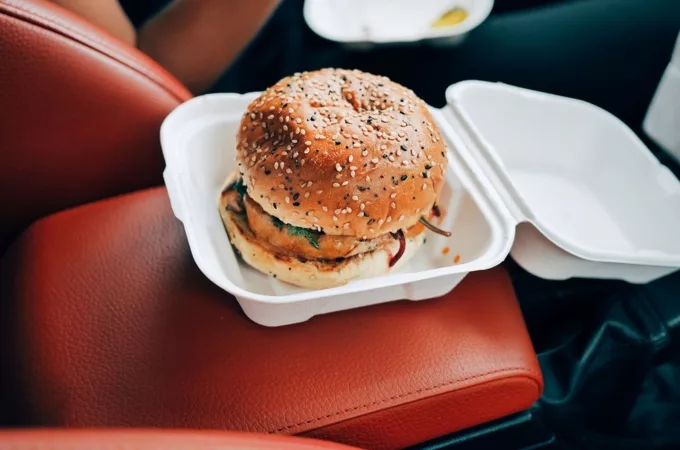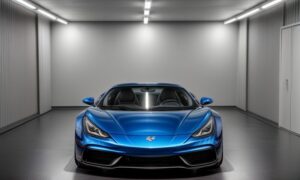Eating at the wheel should be enjoyed with caution
In today’s working life, there is often no time for an extended lunch break.
Instead, many a break is used to drive to the next appointment.
Instead of a restaurant, dining room, kitchen table or park bench, this leaves the car as the place to eat.
GTÜ Gesellschaft für Technische Überwachung mbH explains what drivers with a hungry stomach should pay attention to when eating in the car.
1. do not allow yourself to be distracted: The law does not specifically address the issue of eating at the wheel – it is not generally prohibited.
But it does indirectly: The first paragraph of the German Road Traffic Regulations (StVO) states: “Participation in road traffic requires constant caution and mutual consideration” (§ 1 StVO).
It continues: “Everyone who participates in traffic must behave in such a way that no one else is harmed, endangered or hindered or inconvenienced more than is unavoidable under the circumstances.” (§ 2 StVO).
It is easy to deduce from this that concentration on the traffic situation must not be impaired by circumstances outside of the actual driving activity.
If your attention is drawn to eating in the car, for example, this can quickly endanger other road users.
There are numerous court rulings on accidents in which distraction was demonstrably the trigger or facilitating factor.
Negligence and contributory negligence – that is usually the motto.
Some car insurance companies refuse to settle such negligently caused damage.
2. common sense decides: Sure, chopping up a schnitzel with a knife and fork on your knees is grossly negligent.
A fork for just the one salad from the plastic bowl may be easier to handle, but you always have to look down – does the fork hit the tomato, is salad dressing already dripping onto your skirt or trousers?
Conversely, sandwiches, muesli bars, pretzels etc. are better eaten on the side.
At least as long as only one hand is taken off the steering wheel to take a bite – which is of course not ideal if you want to be able to react perfectly in dangerous situations.
3. drinking water is good for you: It is generally known that a lack of fluids restricts mental and physical performance and reduces the ability to concentrate and react.
This is precisely why drivers should not forget to drink water on longer journeys.
If a short break really doesn’t fit into your travel plans, drinking bottles that can be opened with one hand are recommended.
These are familiar from cycling.
Some commercially available mineral water bottles can also be held, opened and closed with one hand.
A plastic connection prevents the lid from falling off and rolling into the footwell.
4. undisturbed attention: What about smoking at the wheel and listening to loud music?
Again, neither is expressly prohibited.
But you should never distract your attention while driving or ignore the siren of an ambulance.
Personal responsibility is required when eating, drinking, smoking or listening to music.
In other words, caution should always be a factor.
5. special case of cell phones: The use of cell phones and similar technical devices in the hand is no longer an appeal to common sense.
It is clearly prohibited (§ 23 StVO) and can be punished accordingly.
The experts at GTÜ think this is the right thing to do.
After all, distraction from the traffic situation poses a considerable risk.
Current estimates assume that cell phone use at the wheel is at least partly responsible for around a third of all traffic accidents in Germany.
As a reminder: using a cell phone without a hands-free device is currently punishable by a fine of EUR 100 to 200, plus one to two points on the driving aptitude register and possibly a one-month driving ban, depending on the case.
The ban applies as long as the vehicle’s engine (whether combustion engine or electric motor) is not completely switched off.
The interruption of the ignition by an automatic start-stop system therefore does not count.
6 Dangerous consequences: Whether it’s a sausage, a bottle or a cell phone, even one second of distraction from the traffic is risky.
At 40 km/h, for example, you are already driving more than eleven meters “blind” if you are not concentrating on the traffic.
At 130 km/h it is even more than 35 meters.
Source: GTÜ, 23.11.2023





